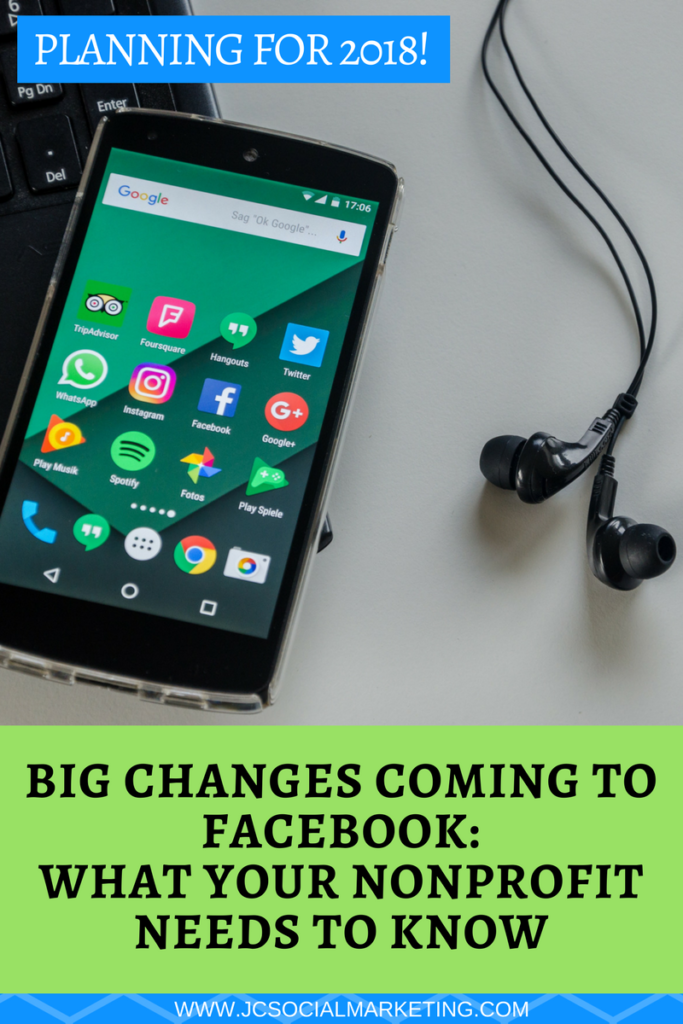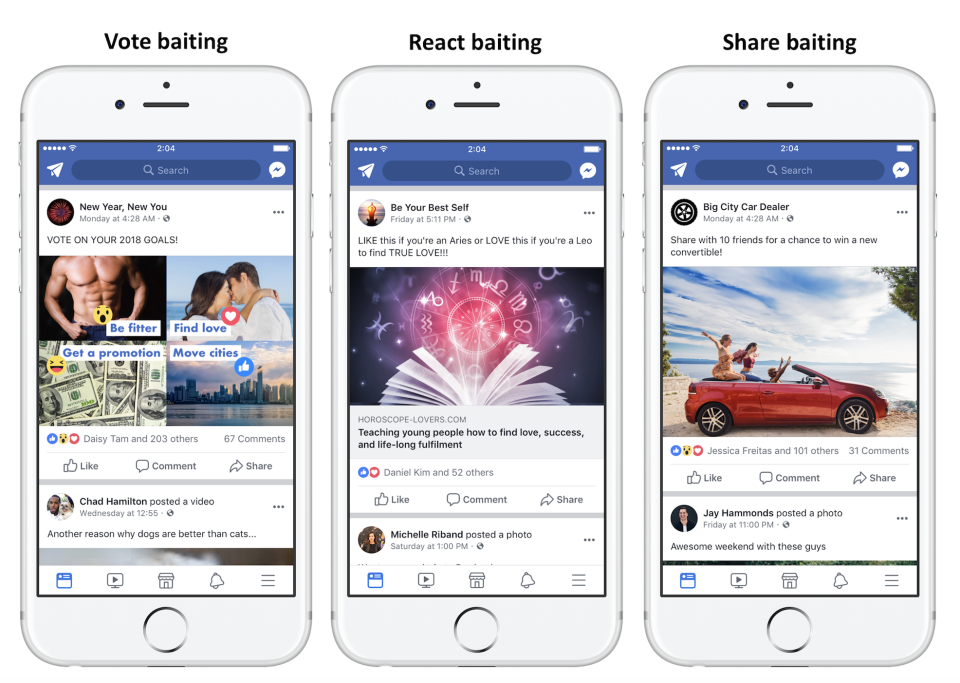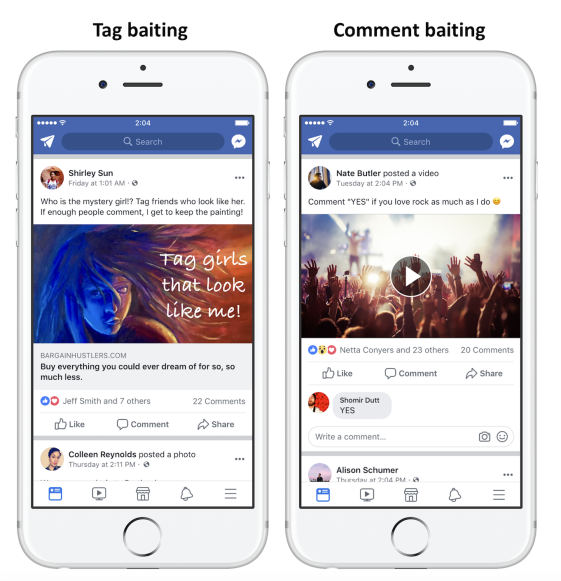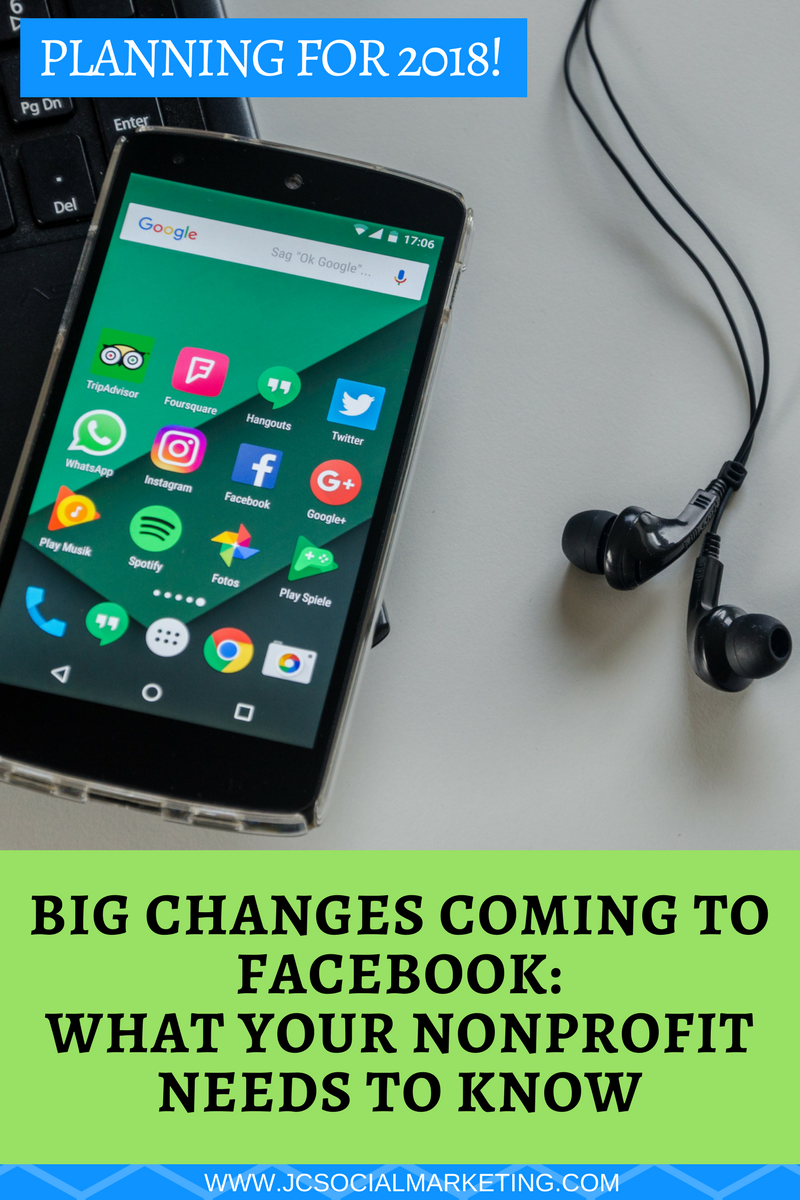 Facebook just announced another sweeping change to the News Feed.
Facebook just announced another sweeping change to the News Feed.
As many nonprofits know, organic (unpaid) reach and post engagement from Pages has gone down in recent months, with fewer and fewer people seeing Page posts.
I’ve written a lot about this topic, and ways to fight the Facebook algorithm and get in front of more of your supporters on Facebook.
Soon many of these tried-and-true social media strategies may not be as effective as they once were.
It is important to note that Facebook has always prioritized posts and content from users’ friends and family, since day one.
However, this new change will once again dramatically affect the reach and engagement of “public content” – posts made by business and organization Facebook Pages.
Mark Zuckerberg wrote on Facebook about feedback he received from users about the amount of “public content” on the site – posts from businesses, brands, and media.
He now feels that these kinds of public posts are “crowding out the personal moments that lead us to connect more with each other.”
He went on to say:
“As we roll this out, you’ll see less public content like posts from businesses, brands, and media.
And the public content you see more will be held to the same standard – it should encourage meaningful interactions between people.”
Email is still the best way to connect with donors and supporters. Do you have an email marketing strategy in place? Join me live for Standing Out In the Inbox: Email Marketing for the Modern Nonprofit.
What Are “Meaningful Interactions”?
Zuck and the higher-ups at Facebook want their users to spend less time mindlessly scrolling through cat memes, cooking videos, and news articles.
It turns out they want Facebook to get back to its roots, where individuals spend more time personally interacting on the site, with friends and family.
In my opinion, this is going to be an incredibly difficult shift for most people, who use Facebook as their primary source of news and entertainment, but do not use it to engage in conversations with actual people.
Facebook does give us several clues about what constitutes a “meaningful interaction” and how brands and organization Pages can adapt.
What Can Nonprofits Do?
My advice for nonprofits is to continue with your current content strategy – being the go-to resource and sharing stories.
Remember that Facebook changes may take months to take effect.
In the interim, there are some strategies that your nonprofit can start to put in place immediately:
Focus on email.
Email is not dead, and it’s not going anywhere. According to Nonprofit Tech for Good:
- There are currently 6.3 billion email accounts worldwide and the number is expected to grow to 7.7 billion by 2021 – a growth rate of 22%.
- Email accounted for 26% of all online revenue in 2016 and grew 14% over 2015.
- The number of smartphone users worldwide has reached 2.4 billion and is projected to grow to 6.1 billion by 2020.
- 56% of email opens are now mobile.
Email still remains the best way to communicate with a large group of people at scale – when done correctly and when email campaigns are carried out in a strategic fashion.
If you need help creating your nonprofit email marketing strategy, join me for a free nonprofit Master Class – Standing Out In the Inbox: Email Marketing for the Modern Nonprofit.
Focus on Groups.
Groups may now get priority over Pages, since they promote “meaningful interactions” (in many cases).
You may want to consider starting a Facebook Group for your nonprofit.
Facebook said:
“In Groups, people often interact around public content. Local businesses connect with their communities by posting relevant updates and creating events. And news can help start conversations on important issues.”
I’ll be writing more about how to create and use Facebook Groups for nonprofits in the coming weeks.
Email is still the best way to connect with donors and supporters. Do you have an email marketing strategy in place? Join me live for Standing Out In the Inbox: Email Marketing for the Modern Nonprofit.
Focus on engaging content but stop using “engagement bait.”
Facebook said:
“Pages making posts that people generally don’t react to or comment on could see the biggest decreases in distribution.
Pages whose posts prompt conversations between friends will see less of an effect.”
It may seen counter-intuitive, but Pages will have to be engaging without using so-called “engagement bait” on posts.
Examples of engagement bait include:
- Vote baiting
- React baiting
- Share baiting
- Tag baiting
- Comment baiting.


However, Facebook did clarify that posts asking “people for help, advice, or recommendations, such as circulating a missing child report, raising money for a cause, or asking for travel tips, will not be adversely impacted by this update.”
Focus on live video.
We all know by now the popularity and proliferation of live video on all social networks, especially Facebook.
- Videos on Facebook see an average of 135% more organic reach than images.
- Facebook users spend 3x more time watching live videos than a video that’s no longer live.
- They also comment more than 10x more during live videos.
Livestream surveyed customers and discovered that:
- 80% of respondents said they would rather tune into a live video than read a blog post.
- 82% of respondents were more interested in watching live video from a brand than reading social media posts.
Facebook said the following:
“Page posts that generate conversation between people will show higher in News Feed. For example, live videos often lead to discussion among viewers on Facebook – in fact, live videos on average get six times as many interactions as regular videos.
Many creators who post videos on Facebook prompt discussion among their followers, as do posts from celebrities.”
And as we now know, it’s all about promoting discussion!
Email is still the best way to connect with donors and supporters. Do you have an email marketing strategy in place? Join me live for Standing Out In the Inbox: Email Marketing for the Modern Nonprofit.
What are your reactions to these Facebook News Feed changes? Leave your thoughts in the comments.
Free e-book for nonprofits: The Essential Guide to Nonprofit Facebook Groups!

Everything you need to get set-up and get started with Groups!
Facebook recently announced that they are going to put more an emphasis on building community and encouraging “meaningful interactions” on the site. This means less reach for public posts by brands and organizations.
So what's a nonprofit to do? Get in the community engagement game! One way to build a dynamic, passionate community is to create a Facebook Group.
In this step-by-step guide:
- The difference between Facebook Groups and Facebook Pages
- How to create a Facebook Group for your nonprofit
- The pros and cons to starting and managing a Facebook Group
- Key considerations when deciding to start a Group for your specific organization

Comments 4
Pingback: How will Changes at Facebook affect non-profits? | Not for Profit.org.nz
Pingback: Surviving the FB newsfeed change | The Orange Trail
Pingback: Los próximos cambios de Facebook podrían ayudar a las pequeñas organizaciones sin fines de lucro | COOMMU
Pingback: Facebook Changes: How Must Nonprofits Adapt (+ New Best Practices)